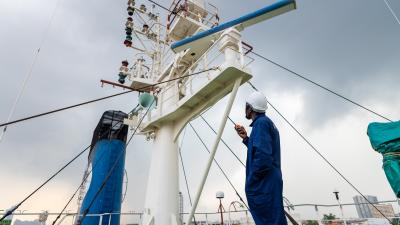
New technologies to improve health and safety performance
Discovering Safety joins forces with Safetytech Accelerator to build a Smarter Regulation Sandbox.
Cyber-securing maritime autonomous surface ships. A research project from the Lloyd's Register Foundation-funded Data-Centric Engineering programme at The Alan Turing Institute.
This page is approximately a 2 minute read
This page was published on

The International Maritime Organisation have highlighted an increasing need for AI in the maritime sector from as early as 2017 and have run regulatory scoping exercises focused on Maritime Autonomous Surface Ships (MASS). To work effectively and efficiently they would need to have a high level of autonomy, however this comes with its own risks including:
It is currently illegal to sail a fully autonomous ship on UK waters, however, semi-autonomous are allowed. In order, for fully autonomous ships to be legalised, the above issues need to be addressed and AI development/tools across the sector to be regulated and standardised internationally.
This project focuses on the network and system security aspects of Maritime Autonomous Surface Ships (MASS).
Rather than concentrating on the security of the AI itself, the project examines the security of the hosting environments where the AI operates within autonomous systems.
Additionally, the project explores data visualisation, specifically how cyber and cyber-physical security data impact marine technology and engineering design and implementation.
Cyber vulnerabilities in human-autonomy teaming technology
To demonstrate the cross-discipline research undertaken by the team, they developed an animation that outlines the key considerations of this project. The video explains the projects focus on secure and trustworthy AI for autonomous maritime systems, delving into the possible cyber vulnerabilities of AI systems on uncrewed surface vessels and in remote operating centres. The video then also goes on to demonstrate how AI can be developed to both be operational and have cyber resilience using data fusion.
This project aims to offer a comprehensive, holistic view of securing MASS AI and to effectively communicate practical solutions to the relevant stakeholders.
Dr Kimberly Tam, Theme Lead for Marine and Maritime, Data-Centric Engineering
Walter, M., Vineetha Harish, A., Christison, L. and Tam, K., 2025. Visualisation of cyber vulnerabilities in maritime human-autonomy teaming technology. WMU Journal of Maritime Affairs, pp.1-27.
Read now